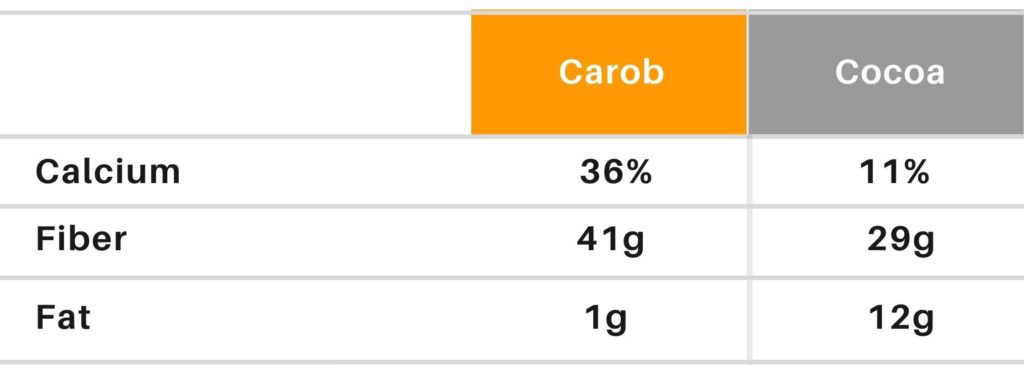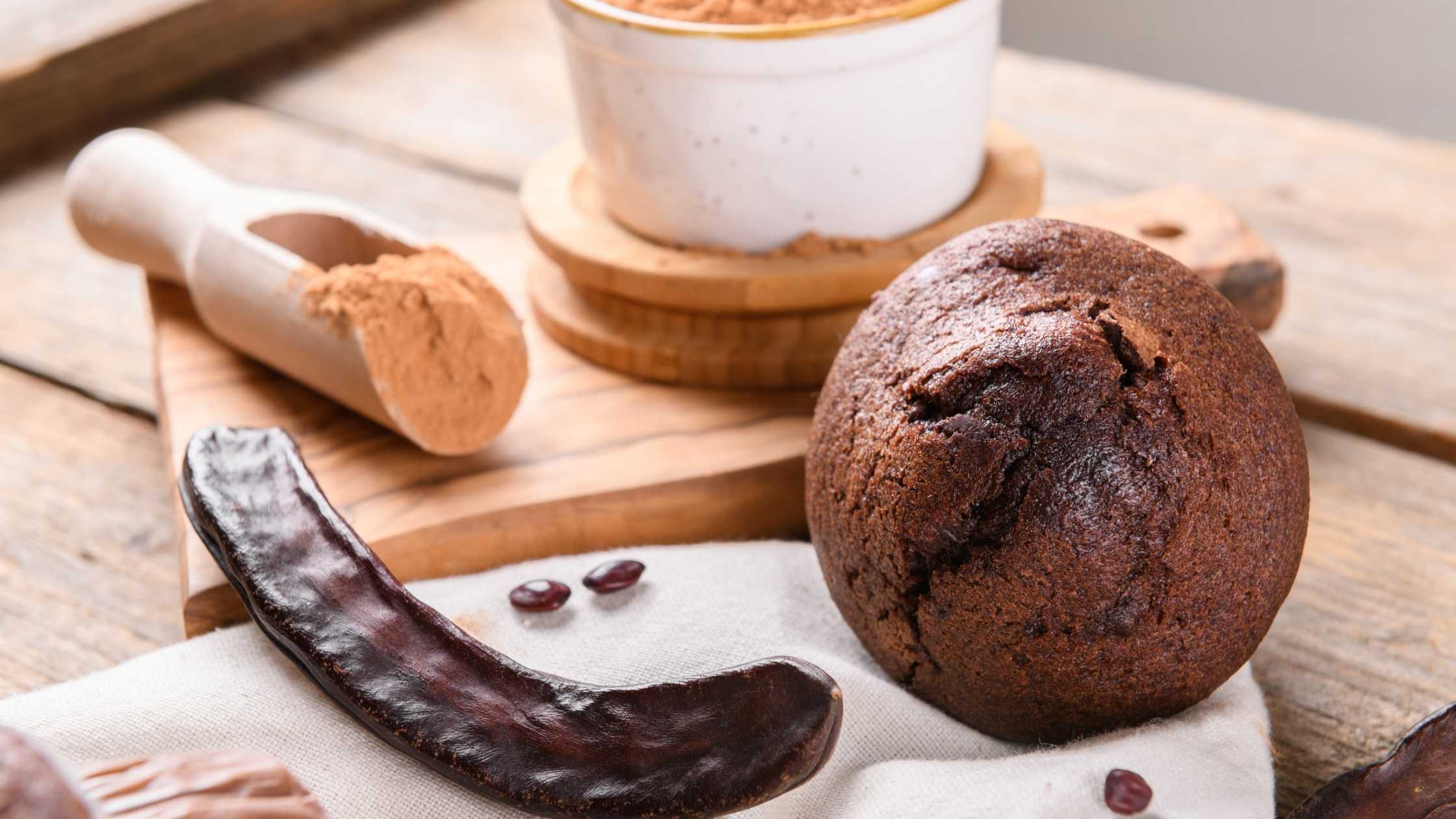What is Carob?
Carob (Ceratonia siliqua) is a flowering evergreen tree in the legume family. It is also sometimes referred to as St. John's Bread. There’s a biblical story story which shares that St. John the Baptist subsisted on carob beans mixed with honey while he crossed the desert.
Carob was traditionally eaten in the Middle East as a source of sugar before sugar cane and beets were used for that purpose. The seeds are also referred to as “locust beans.” Locust bean gum, a thickening agent found in alternative dairy and other products, comes from these seeds.
Benefits of Carob
Naturally sweeter than cacao (the base ingredient for chocolate), carob is more than a sweetener. There are a wide range of health benefits from it and many of the studies being done indicate positive outcomes from the use of carob:
- Many people prefer carob to chocolate because, unlike chocolate, it does not contain the stimulants caffeine or theobromine. It also does not have any oxalic acid which can cause calcium oxalate kidney stones in some individuals.
- It is rich in tannins creating a binding effect which can be helpful when given to someone with diarrhea. Tip: I have found documentation suggesting 15 g. of carob in applesauce (for flavor and ease of ingestion) is an acceptable dose for children.
- Carob is currently being examined as a protein source. Research indicates that the flour made from the germ of carob has a high protein content, as much as 46%. according to studies currently being done at the Universidad de Sevilla, Instituta de la Grassia, by isolating the germ further, protein content percentages, in a laboratory setting, have reached as high as 95%. This isolate is of interest because it would offer an alternative to soy or dairy proteins for protein shake formulas created for athletes and for diabetics.
- The germ flour of carob also yields higher levels of arginine, an essential amino acid that is important for healing wounds, for immune function, and for hormone release among other physiological functions.
- For people with celiac disease or gluten intolerance carob flour and carob bean gum can be a good choice as carob contains no gluten.
- There appears to be a cholesterol lowering effect of carob fiber which is taken from the pulp of the fruit. According to a study published in the European Journal of Nutrition “Daily consumption of food products enriched with carob fibre shows beneficial effects on human blood lipid profile and may be effective in prevention and treatment of hypercholesterolemia.”
- Carob fiber is also high in phenolic antioxidant substances, and there are studies underway looking into the chemo preventive qualities of carob.
- Carob is rich in polyphenols which can reduce oxidative stress scavenging free radicals. These phenols have been shown to reduce the risk of some chronic diseases such as cancer and heart disease.
- The tannins and polyphenols found in carob fiber may have the potential to be helpful with those who suffer from type 2 diabetes. These compounds can reduce the blood glucose response by inhibiting enzyme activity; therefore, slowing the rate of starch digestion.
Carob usually comes in a powder form although it is possible to also buy it in blocks. It is not currently available in gum or liquid form, these tend to be only used for commercial applications.
Is it like chocolate?
Carob does not have the same taste/flavor as chocolate, but many people like it. Especially because, as mentioned above, it’s naturally sweet. As well as being sweeter, carob provides good nutrient density when compared to cocoa. The comparison below is for one cup: 
Carob can be substituted for cocoa in a recipe by replacing each part of cocoa powder with 2-1/2 parts carob powder by weight.
To substitute for baking chocolate, use 3 Tablespoons carob powder plus 2 Tablespoons water for one square baking chocolate.
You can also purchase carob chips, a healthier option is to choose the unsweetened ones.
If you are monitoring calories and/or carbohydrates, here is a comparison of unsweetened carob and unsweetened cocoa powder:
1 Tbsp unsweetened carob = 25 calories and 6 grams of carbohydrates
1 Tbsp unsweetened cocoa powder = 12 calories and 3 grams of carbohydrates
In conclusion, carob is great as a sweetener substitute, it is high in protein and will probably be coming soon to a protein supplement near you. Useful for people who cannot ingest gluten, it is also showing promise as a functional food that may help lower cholesterol and help prevent oxidative cell damage. It may also be effective in the prevention of colon cancer and reducing the risk of type 2 diabetes.
Consider adding carob to your diet but please remember to read the labels. If you start seeing wonderful health claims on the front of a package that's fine but always check what other ingredients are in your food before you unthinkingly purchase something because of the marketing language.
I like carob, and we do use it sometimes in baking. I don't consider it to be a “substitute” for chocolate, but instead another ingredient with its own unique flavor. Give it a try, you may discover a new flavor to use plus some health benefits too.
[expand title="Sources"]https://ift.onlinelibrary.wiley.com/doi/full/10.1111/1541-4337.12177
https://pubmed.ncbi.nlm.nih.gov/30110252/
https://pubmed.ncbi.nlm.nih.gov/11782210/
http://www.foodnavigator.com/Science-Nutrition/Scientists-study-carob-as-alternative-protein-source
http://cerealchemistry.aaccnet.org/doi/abs/10.1094/CCHEM.1998.75.4.488?cookieSet=1&journalCode=cchem
http://www.herbco.com/p-449-carob-bean-pods-cs.aspx
http://www.nutraingredients.com/Research/Carob-fibre-to-reduce-cholesterol-levels
[/expand]



